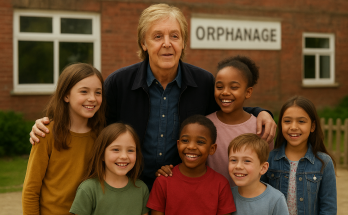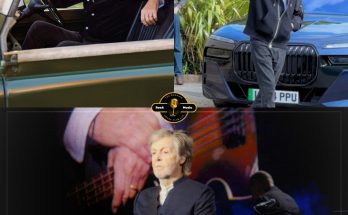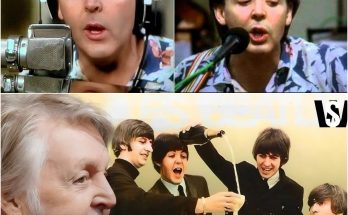It was the kind of night that felt torn out of history, when Paul McCartney, Mick Jagger, and Ringo Starr stood side by side under the stage lights, their voices rising together in a raw, trembling tribute to John Lennon; the air thickened with memory as every chord carried echoes of friendship, rebellion, and the unbroken thread of music that bound them across decades; fans wept openly, some whispering that Lennon himself seemed to hover in the silence between verses, a ghostly presence felt more than seen; for a few sacred minutes, rivalry dissolved, time folded in on itself, and three legends became not icons but grieving brothers singing to the one they lost; the crowd held its breath, phones lowered, as if aware they were witnessing not a performance but a living monument; and when the last note faded, the applause erupted like thunder, yet even that could not drown out the ache of love and absence stitched into every line.
A Night Stitched With Memory
It was the kind of night that will be spoken of for decades, a gathering where music, grief, and history collided under a single spotlight. Paul McCartney, Mick Jagger, and Ringo Starr — three names etched into the very DNA of rock and roll — stood shoulder to shoulder in a moment no one believed they would ever see. The occasion was not spectacle, but tribute, a raw offering to John Lennon, whose absence still shadows every chord they play. As the first notes rang out, the air seemed to thicken, and the crowd fell into reverent silence, understanding that this was not simply another concert, but a living monument to love, loss, and brotherhood.
The Ghost in the Silence
Every verse carried echoes of Lennon, as though his presence lingered in the silence between the lines. Fans later whispered that he seemed to hover above the stage, felt if not seen, a ghostly reminder of the man whose spirit still drives their music. McCartney’s voice cracked with age and memory, Ringo’s steady beat pulsed like a heartbeat of the past, while Jagger’s defiant energy sharpened the edges of sorrow into something almost cathartic. Together, they built a tapestry of sound that transcended rivalry, reminding the world that even legends are, at their core, brothers bound by grief.
A Crowd Transformed
For the thousands who gathered, phones lowered and tears streaming, the performance was less about entertainment and more about communion. People clutched one another in the dark, strangers united by the recognition that they were witnessing history folding back on itself. Rivals became allies, musicians became mourners, and the audience became part of the song itself. Every note carried the ache of years gone by, every harmony a plea against forgetting. In that fragile space, there was no stage and no crowd — only shared memory, and the sense that Lennon himself was listening.
Applause Like Thunder, Ache Like Stone
When the last note finally faded, the silence that followed was almost unbearable, as though the world itself had stopped to honor the loss. And then the applause erupted — not polite, not routine, but thunderous, a collective release of grief and gratitude. Yet even the roar of thousands could not drown out the ache stitched into every line of the tribute. For McCartney, Jagger, and Starr, the performance was not about reclaiming glory but about surrendering to memory, offering their voices as a bridge to the one who was gone. And for the fans, it was proof that while time may take legends from us, music keeps them forever alive.



